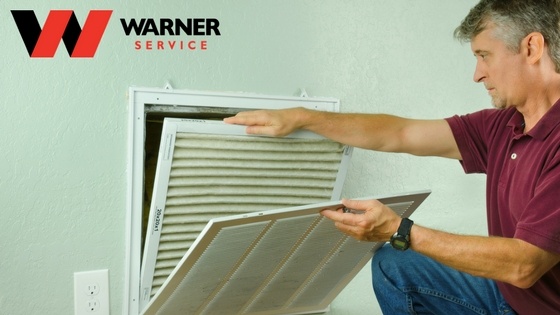
Most homeowners are familiar with this scenario: Everything seems to be functioning fine, but suddenly, a major component to the HVAC system is compromised. Whether it is the furnace or the heat pump, it will most likely be a costly fix, especially if you were not prepared to budget for the replacement.
To get you (and your wallet) ready for anticipated replacements, here is Warner Service’s timeline to the lifespan of residential heating, cooling, and ventilation appliances:
1 month:
- Change the air filter monthly to prevent allergens and pathogens from building up in your home. To put a stop to harmful allergy inducers this fall, download our checklist.
3 to 5 years:
- Newer outdoor condensing units are more susceptible to failure during this timeframe. If it gets damaged due to lightning or a flood, homeowners need to replace the unit. However, it is safe to keep the evaporator coil (and the unit will most likely be under warranty), which will save you money.
5 to 10 years:
- Copper refrigerant tubing should be replaced if formicary corrosion, a process when formaldehyde converts to formic acid on the A/C coil and produces pinholes, or Freon leaks occurs. Learn more about what causes refrigerant leaks here.
- The evaporator coil, especially if the SEER rating is 12 or lower or the overall unit is at least a decade old, needs to be replaced.
- Get a new air handler for the central air conditioner unit to keep airflow moving and clean.
- Carbon monoxide detectors should be replaced to lessen the chance of the harmful chemical going undetected in your home.
- Gas and electric water heaters only last about a decade. To get the most out of these appliances in the meantime, remove any sediment and debris using our quick 10-step guide.
10 to 20 years:
- Heat exchangers need to be replaced. In this timeframe, cracks, rust, and metal fatigue cause this vital furnace component to fail.
- The 10-year mark is also a good time to replace the air conditioner with a more energy efficient model.
- Most heat pump models last for about 20 years, but check to see if it needs replacement due to wear and tear at about 15 years.
- Air conditioning units last between 10 to 15 years. To keep it functioning optimally, close the blinds; use a fan, strategically plant trees, and follow more easy tips.
- It is time to replace the furnace or boiler. After two decades of reliable service, these appliances are worn out and old enough for a new model to take its place.
- Though it supplies your home with endless hot water, tankless water heaters should be replaced after 20 years.
25 to 35 years:
- A traditional thermostat typically lasts about 25 years. A few telltale signs of failure include the furnace erratically turning on and off, the room temperature differing from the thermostat reading, and a furnace refusing to turn on.
- Programmable and smart thermostats should be replaced after 35 years due to technological advancements.
Lifetime:
- As long as there are no punctures, cuts, wet stains, or burns, insulation should last a lifetime – though it’s important to perform maintenance on it with the change of each season.
Part of being a homeowner is preparing to replace essential parts of the HVAC system to ensure that your family is breathing the cleanest, purest air possible. With Warner Service’s comprehensive timeline of appliance lifespans, we hope you can budget for these replacements in the future.
If you want to learn more about replacing your dated system, contact Warner Service about our Fall Trane promotion. We’ll tell you all about how you can scratch, win, and save on a new unit:


